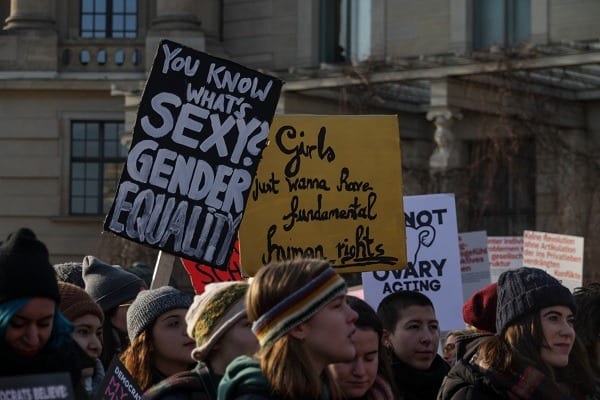The SDG Gender Index finds that with just 11 years to go, 40% of the world’s female population live in countries failing on gender equality. That’s 1.4 billion women and girls. A further 1.4 billion females live in countries that “barely pass”.
The SDG Gender Index is part of an agreement signed by 193 countries in 2015, in which they pledged to tackle 17 Sustainable Development Goals (SDG) by 2030. Of these goals, 14 relate to gender equality issues and they all have the aim of increasing global living standards. The index covers the state of gender equality for 95 per cent of the world’s girls and women.
No country has reached the “last mile” on gender equality and so far, no country scores consistently well across all measures. However, the report does note that “pockets of progress and compelling success stories can be found even among the lower performing regions and countries”.
According to the report, just 8 per cent of the countries measured scored a “good” rating of 80 or more out of 100. No country achieved an “excellent” score of 90 or higher.
A staggering 80% of countries measured scored either “poor” or “very poor”.
Denmark is ranked as the best country in the world for gender equality, scoring 89.3 out of 100, falling just short of an “excellent” ranking. The top 10 included Finland, Sweden, Norway, the Netherlands, Slovenia, Germany, Canada, Ireland and Australia. The report indicates that overall, higher income countries are more likely to have greater gender equality than lower income countries.
On the other end of the list, Chad was ranked last, with a score of 33.4 out of 100. The bottom 10 countries include Sierra Leone, Liberia, Nigeria, Mali, Mauritania, Niger, Yemen, Congo and DR Congo. These countries also all appear on the OECD’s 2018 list of fragile states.
Introducing the 2019 SDG Gender Index, the most comprehensive tool available to explore the state of gender equality:
• Across 129 countries-covering 95% of girls & women
• 14 of the 17 #SDGs
• 51 targets linked to issues aligned with #SDGs#EM2030Index https://t.co/uovMJBhYmm pic.twitter.com/baGxPKMYhW— IWHC (@IntlWomen) June 3, 2019
It appears that countries are not doing enough to improve women’s lives. The report states that “even the highest scoring countries have more to do, particularly on complex issues such as climate change, gender budgeting and public services, gender pay gaps and gender-based violence”.
Not all hope is lost though, as the report indicates that international efforts and public investment do make a difference to gender equality.
“While the index presents a challenging picture, it also presents a hopeful message about the power of international efforts and public investment. Countries, overall, have performed best on issues where coordinated and concerted policy focus and funding have been directed over the past 20 years.”



